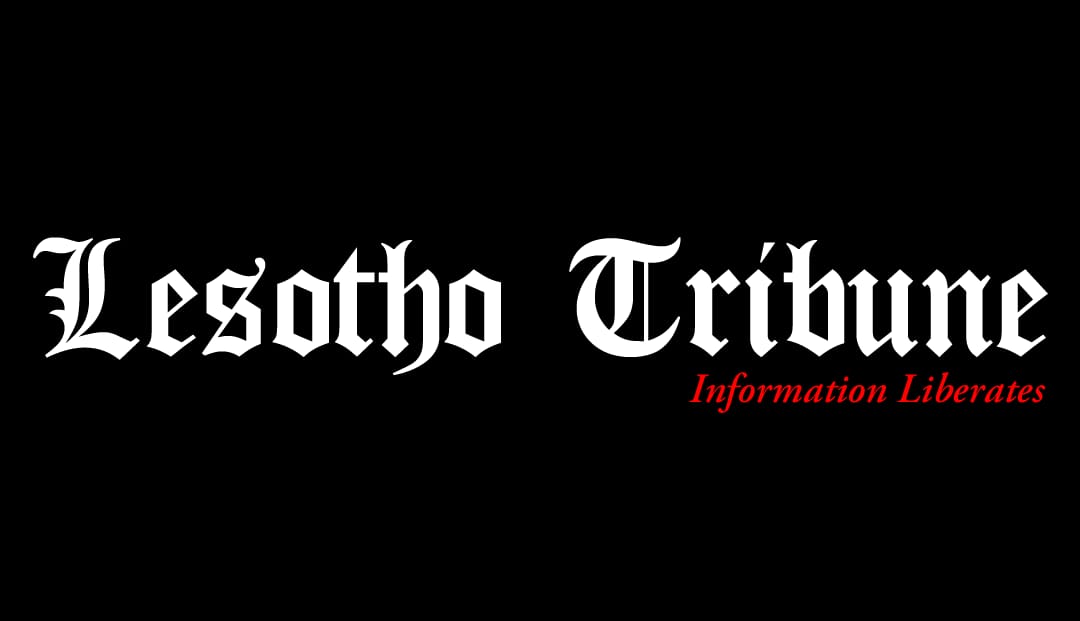Over the past two years, Lesotho Tribune-has conducted a deep investigation into a complex web of corruption, negligence, and environmental degradation within Lesotho’s most valuable industry—diamond mining.
In an explosive five-part investigative series, we reveal how the government of Lesotho has been missing out on over a billion Maloti annually, resulting in a devastating loss of national wealth.
At the heart of this issue is the illegal renewal of Letšeng Diamonds’ lease. This maneuver not only bypasses regulatory frameworks but has also caused significant harm to the Moloraneng stream and the surrounding environment.
Our investigation goes further, exposing how successive Ministers of Mines have blatantly violated the Mines and Minerals Act, disregarding legislation intended to protect Lesotho’s natural resources. Additionally, we uncover how diamond mining corporations have exploited depreciation laws that do not exist, costing the country billions in lost tax revenue.
This series delves into the tangled relationship between power, policy, and profit, bringing to light stories that have remained hidden—until now.
Understanding the Difference Between Sales Tax and Royalty in Lesotho’s Diamond Industry
In Lesotho’s diamond sector, two important financial obligations exist: the statutory Diamond Export Sales Tax and the statutory Royalty. Though they might appear similar, they have distinct purposes and applications.
Sales Tax (Precious Stone Order of 1970):
The Sales Tax, defined in the Precious Stone Order of 1970, imposes a 15% levy on the value of rough diamonds exported from Lesotho. Its main goals are:
• Regulatory Purpose: Ensuring an adequate supply of rough diamonds to Lesotho’s local polishing and cutting industry.
• Encouraging Local Beneficiation: Producers who choose to export rough diamonds incur this 15% tax. However, if they sell the diamonds locally for processing, they are exempt from this tax.
• Trigger Point: The tax applies specifically when rough diamonds found in Lesotho are exported. No export means no Sales Tax is due.
This tax was designed to promote in-country processing of diamonds, fostering local industry growth and employment.
Royalty (Mines and Minerals Act of 2005):
The Royalty, as established by the Mines and Minerals Act of 2005, is a charge on the gross market value of minerals obtained. Key features include:
• Rates: 10% for precious stones like diamonds and 3% for other minerals.
• Basis of Calculation: It’s based on the gross sale value receivable at the mine gate.
• Purpose: Providing the nation with a share of the revenue from the extraction of its natural resources.
• Trigger Point: The royalty is due upon the sale of the mineral, whether it’s exported or sold locally.
This Royalty ensures that the Basotho Nation benefits financially from the depletion of its mineral wealth.
Why Are They Different?
Though both involve payments related to diamond extraction, their differences are significant:
• Objective: The Sales Tax is an export levy aimed at regulating the industry and promoting local processing by making it more costly to export unprocessed diamonds. The Royalty is a general revenue measure intended to compensate the nation for the extraction of its natural resources.
• Application: The Sales Tax only applies when rough diamonds are exported. If diamonds are sold and processed within Lesotho, this tax doesn’t apply. The Royalty is charged on all diamonds extracted and sold, regardless of their destination.
• Economic Impact: The Sales Tax encourages companies to invest in local processing facilities, boosting the domestic economy. The Royaltyprovides the government with funds from all mineral sales to support public services and national development.
Understanding these distinctions is crucial for grasping how Lesotho manages its diamond resources. The Sales Tax functions as a tool to develop local industry and retain value within the country, while the Royalty ensures that the nation receives rightful compensation for its mineral assets.
The Role of Tax Sovereignty in Regulation
Tax sovereignty is a critical part of governance, empowering a state to collect revenue and regulate economic activities through fiscal policies. It goes beyond merely raising funds—taxation is a tool to shape societal behavior, foster industrial growth, support transitioning sectors, and promote social justice.
Around the world, tax policy is used to influence economic and social outcomes by encouraging or discouraging certain behaviors among taxpayers. For example, governments incentivize specific industries or promote social equity through different tax regimes.
In Lesotho, the Precious Stones Order of 1970 provides an example of tax sovereignty used for regulatory purposes. Section 17 imposes a 15% tax on the export of rough diamonds, aimed at encouraging local diamond processing, supporting the domestic economy, and ensuring that more of the diamond wealth stays within the country. This is a key assertion of Lesotho’s sovereignty over its natural resources, ensuring that their exploitation benefits the entire nation.
The Diamond Sales Tax is designed to incentivize local processing, boost industrial development, generate employment, and retain value within Lesotho. This strategy mirrors policies from other diamond-producing countries, such as South Africa, which imposes export taxes to stimulate local industry.
The broader framework of the Precious Stones Order further regulates the diamond sector, creating a Diamond Cutting Industry Board to ensure a steady supply of diamonds for local processing. This reinforces the importance of keeping diamond wealth within the country and encourages local beneficiation to avoid the 15% export levy.
The Mines and Minerals Act of 2005 and Royalties
The Mines and Minerals Act of 2005 outlines that holders of mineral concessions must pay royalties to the government on any minerals extracted. Royalties for precious stones are set at 10% of the gross market value.
However, these payments, when classified as royalties, fail to reflect the true nature of the diamond industry’s impact. Unlike intellectual property royalties—where the asset remains intact—mining royalties compensate for the permanent depletion of a finite resource. Diamonds, once extracted, are gone forever.
The current treatment of royalties, which allows them to be deducted as business expenses, introduces a deep inequity. Essentially, the Basotho people end up subsidizing the depletion of their own resources. This contradicts the Constitution of Lesotho, which affirms that all land and its wealth belong to the Basotho people, and requires that such resources be managed in their best interest.
The Mines and Minerals Act (MMA) also emphasizes that all ownership rights in minerals are vested in the Basotho nation. It is the government’s responsibility to manage these resources for the nation’s long-term benefit. The Minister of Natural Resources is charged with negotiating mining leases that ensure the greatest benefit to the Basotho people.
Fiduciary Responsibility and Constitutional Obligations
The Constitution of Lesotho establishes the supremacy of law and reinforces that the nation’s wealth belongs to its people. Section 107, which declares all land and resources as the collective property of the Basotho, aligns with international principles of Permanent Sovereignty over Natural Resources, such as those articulated by the United Nations.
Mining royalties must be treated as compensation for the depletion of national wealth, not merely as business expenses. The Mines and Minerals Act requires the Minister to ensure that mining agreements benefit the nation, particularly by adhering to the 10% royalty rate. Any attempt to reduce this rate without legislative approval violates both the law and the Constitution.
The King, as head of state, holds these resources in trust for the nation. This is not a symbolic responsibility but a constitutional duty. Any reduction in royalty rates below the legal minimum undermines this trust and breaches the fiduciary obligation to protect the nation’s wealth.
Moreover, the Constitution mandates that all national revenues, including royalties, be paid into the Consolidated Fund. Lowering royalties without proper oversight reduces the financial resources available for essential public services and infrastructure.
The distinction between administrative and executive powers is vital here. The Minister’s role in negotiating mining leases is administrative and must adhere to existing laws. Any reduction in royalty rates must be pursued through legislative channels, not through unilateral decisions by the Minister. To do otherwise undermines the rule of law and jeopardizes the nation’s wealth.
The Public Interest and Transparency
Any decision to lower royalties must be justified as being in the public interest. The statutory 10% royalty rate is designed to ensure that the wealth generated from mining benefits the entire nation, not just foreign mining companies. Reducing this rate, without clear justification, privileges private interests over the national good.
Transparent and accountable decision-making is essential to maintaining public trust and protecting the nation’s resources. Any attempt to lower royalty rates without proper scrutiny compromises the government’s ability to manage Lesotho’s resources effectively and equitably.
The payment of royalties is not merely a transaction—it is a constitutional responsibility. The Minister of Natural Resources has no legal authority to reduce royalties below 10% without legislative approval. Any such action violates the Mines and Minerals Act of 2005 and the Constitution of Lesotho, and undermines the nation’s sovereignty over its natural resources.





